
Discover the latest advancements in medical devices and artificial intelligence, focusing on the transformative impact of IoMT devices in healthcare.

Discover the latest advancements in medical devices and artificial intelligence, focusing on the transformative impact of IoMT devices in healthcare.

A recent study highlights novel analytical techniques for phosphorus detection, enhancing pollution control and sustainability in environmental monitoring.


In this final interview segment with Lingyan Shi, she discusses the challenges of developing multimodal metabolic nanoscopy systems, and where these systems could be applied in the future.

A review article from researchers at Liaocheng University explores the challenges of applying vibrational spectroscopy techniques to food authentication.

In the second part of a three-part interview, Lingyan Shi recaps the award technical session that she chaired at the SciX Conference, highlighting the speakers she invited and what they discussed.

A new study reveals that resveratrol binds to peanut protein arachin through hydrophobic and hydrogen-bond interactions, enhancing protein stability and offering valuable insights for developing functional peanut-based food products.

In this interview segment, Shi recaps her talk that she delivered at the SciX Conference and the four major technologies that she and her team developed over the past few years at the University of California, San Diego.
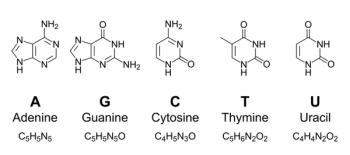
In a recent study, a team of researchers from Peking University and the National Key Laboratory of Advanced Micro and Nano Manufacture Technology have proposed a new method for identifying DNA nucleobases using a fusion of terahertz time-domain spectroscopy (THz-TDS) and advanced deep learning techniques.

Top articles published this week include several video interviews from our coverage of the SciX Conference and an inside look at classical correction methods.

In this video segment, Fay Nicolson discusses her career trajectory, from her time in graduate school to her time as a postdoctoral candidate to her time as an independent researcher.

In this interview segment, Karl Booksh dives deeper into a new technique called conformal prediction, and how his group has been applying it in their research.
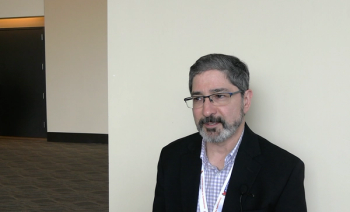
In the second and final part of our interview with Rob Lascola, he addresses the main challenges in achieving accurate acidity measurements using Raman spectroscopy in complex, highly absorptive systems, as well as explains what he has learned about dissolution mechanisms, and how these insights can influence future nuclear processing strategies.

In this interview segment, Reddy discusses how O-PTIR combined with mid-infrared frequency comb technologies enhances both resolution and throughput in tissue analysis and how this integration address the limitations of conventional MIRSI approaches in clinical settings.
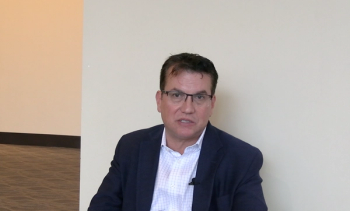
In this interview segment, Rafael Davalos discusses contactless dielectrophoresis, highlighting the utility of this technique not just in cancer research, but other application areas as well.

In this interview segment, Rob Lascola discusses how Raman spectroscopy complements other techniques in fuel dissolution and solvent extraction and what Raman can detect in off-gas streams.

In this video segment, Karl Booksh of the University of Delaware explains how his study highlighted a major improvement in classification accuracy using stacked models for differentiating exotic hardwood species.

In this segment, Bell addresses the key barriers that are preventing SERS from being more widely adopted in complex environments.

In this interview, Yingchan Guo of the University of Florida discusses high-throughput IMS and identifying fatty acyl chains of lipids using mass spectrometry, particularly in matrix-assisted laser desorption ionization (MALDI) imaging.

In this interview segment, Prashant Jain, who is a G. L. Clark Professor of Physical Chemistry at the University of Illinois Urbana-Champaign (UIUC), discusses the implications of his study’s findings, highlighting how they advance our understanding of light-driven hydrocarbon formation pathways and plasmonic catalytic events.

Top articles published this week include several video interviews from our coverage of the SciX Conference and an inside look at the challenges of developing universal spectral libraries.

Spectroscopy sat down with Renee Romano, a graduate student at The Ohio State University, to discuss the broader implications of her findings, including how they demonstrate the potential of Raman spectroscopy for in situ, real-time monitoring of plant–microbe interactions without destructive sampling.
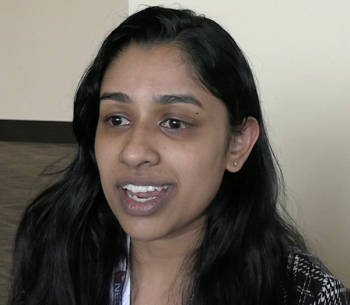
In this exclusive interview, Nishadi Nadeeshani Moragoda Liyanage, a graduate student at The Ohio State University, outlines how the results of her study help advance our understanding of plasmon-induced electron transfer and its applications in nanoscale optoelectronic and catalytic systems.

As part of our coverage of the SciX Conference, Spectroscopy sat down with Witte, a graduate student at The Ohio State University, to talk about how machine learning (ML) algorithms can differentiate between spectral features associated with radiation dose and those reflecting temporal changes post-exposure, as well as the benefits of using Raman spectroscopy to detect and quantify radiation-induced molecular changes.
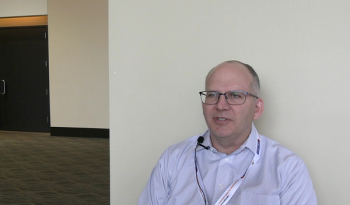
At SciX, Zac Schultz of The Ohio State University sat down with Spectroscopy to discuss his work characterizing molecular interactions with localization microscopy techniques, as well as give his thoughts about how spectrally resolved surface-enhanced Raman spectroscopy (SERS) imaging will impact in vitro cell imaging and other application areas.
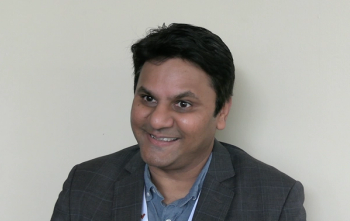
In this interview segment, Prashant Jain of the University of Illinois Urbana-Champaign discusses the unique reaction pathways observed in light-driven chemistry on nanoparticles, particularly in CO2 reduction, and the insights gained into the quantum mechanical mechanisms of these reactions.

In this interview segment, Yingchan Guo previews her talk on Thursday and highlights some of the research projects that are ongoing in the Prentice Research Group at the University of Florida.

In this interview segment, Steven Bell, a professor of physical chemistry at Queen's University Belfast, provides an overview of his talk, and he also outlines what attendees can look forward to at this technical session, highlighting the list of speakers and their research interests.

In this video clip, Fay Nicolson, who is a Research Fellow at the Dana-Farber Cancer Institute and Harvard Medical School, highlights an oral session she is chairing tomorrow that will feature talks about the use of spectroscopy in disease management.

In this interview clip, Yingchan Guo of the University of Florida previews her talk on Tuesday and gives her reaction of the conference thus far.